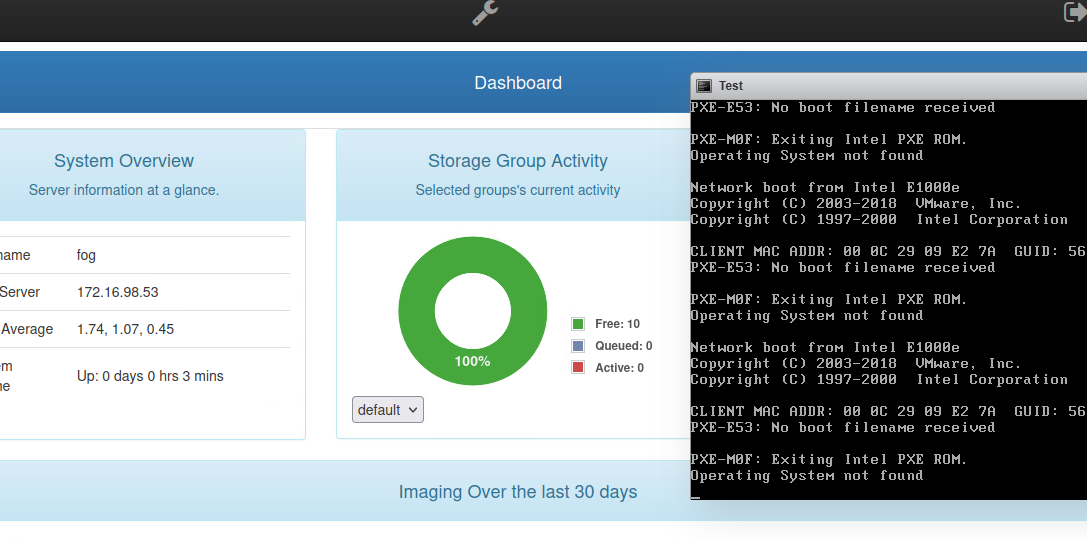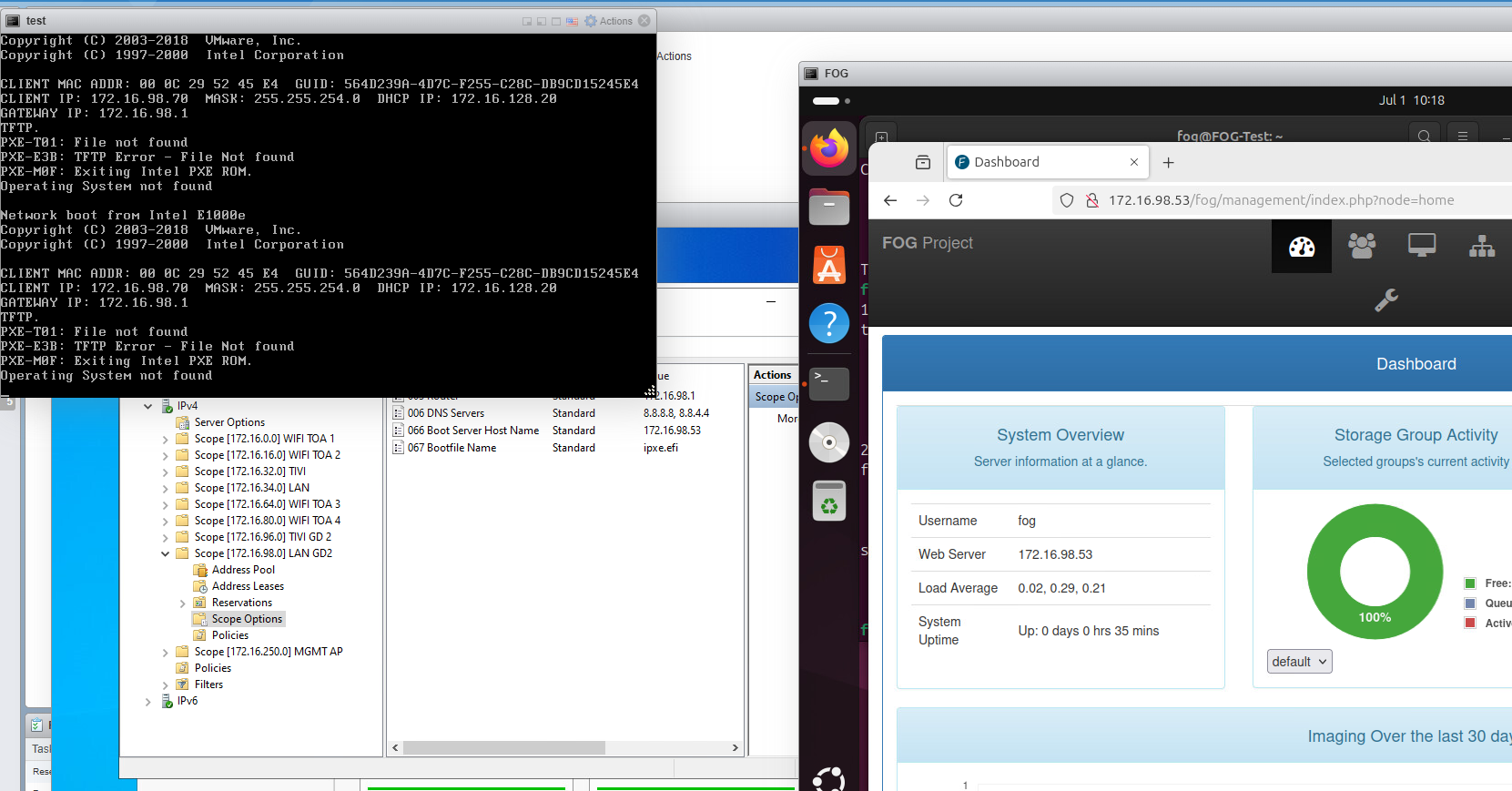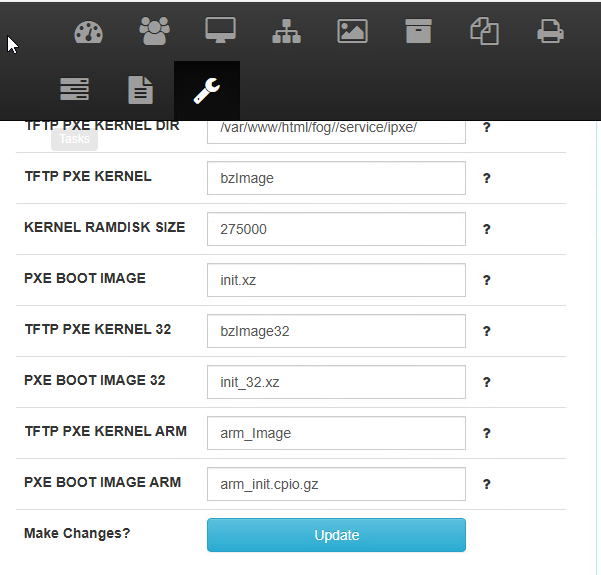Unable to install Fog successfully.
-
I have installed many times but can not boot via Lan and find PXE server

-
@punch07 The issue is related to your dhcp server not specifically FOG. Your dhcp server is not sending out the boot file name, that is what the client is complaining about.
What device is your dhcp server for this netwokr?
-
@george1421 I emulated it on VMware. DHCP server is a router or a win server
-
@punch07 said in Unable to install Fog successfully.:
DHCP server is a router or a win server
I guess I need to ask the question a different way. Did you update the configuration on your dhcp server to include dhcp options 66 to the IP address of your fog server and dhcp option 67 to be ipxe.efi? According to the error message its saying your dhcp server is not handing out the boot file name (dhcp option 67).
If your dhcp server is a soho router, then I understand why its not working. If it is a ms windows server then you need to look into the setup.
-
This post is deleted! -
@george1421 said in Unable to install Fog successfully.:
e
this is my configuration i am testing

-
@punch07 Everything there seems right to me.
Did you disable secure boot on the VM? Is the VM set to UEFI? ipxe.efi requires UEFI so make sure that the VM is changed from BIOS to UEFI. -
@punch07 I agree from the picture everything looks good.
What we don’t know is the number of actors involved with this pxe booting process. We really need to know what the client is being told and by who.
Follow the instructions in this tutorial. Collect the pcap and look at it with wireshark.
https://forums.fogproject.org/topic/9673/when-dhcp-pxe-booting-process-goes-bad-and-you-have-no-clueWhat will be specifically interesting will be the OFFER packets. If you only have 1 dhcp server on your network you should have only one OFFER packet. If you have more than 1 then you need to identify each dhcp server that is responding.
If you have only one OFFER packet, then look into that packet. In the ethernet header you should have two fields. {next-server} and {boot-file} those settings should match what you have set in dhcp options 66 and 67. Both the bootp section and the dhcp options section need to be set.
If you can’t figure out the pcap, unload the pcap to a public file share site and paste the link here. We can take a look at the pcap and give you additional guidance on where to look, but in the pcap file you should see at least 4 packets, DISCOVER, OFFER, REQUEST, ACK/NACK. The OFFER packet comes from your dhcp server(s).
One additional note if you have a primary and backup dhcp servers make sure both have the boot settings configured.
EDIT: I just thought of another issue it might be. If you did not complete the installation properly the
/tftpbootdirectory on the fog server might be empty. Double check to see if you have ipxe.efi in that directory. If its not there, make sure you complete all 3 phases of the install. fog server console->web ui to install database-> fog server console to complete the install. -
@george1421 said in Unable to install Fog successfully.:
EDIT: I just thought of another issue it might be. If you did not complete the installation properly the
/tftpbootdirectory on the fog server might be empty. Double check to see if you have ipxe.efi in that directory. If its not there, make sure you complete all 3 phases of the install. fog server console->web ui to install database-> fog server console to complete the install.i don’t see.

-
@punch07 to view the /tftpboot use the command line terminal window. Now I do have to say that different distros have the directory in different locations like /var/lib/tftpboot.